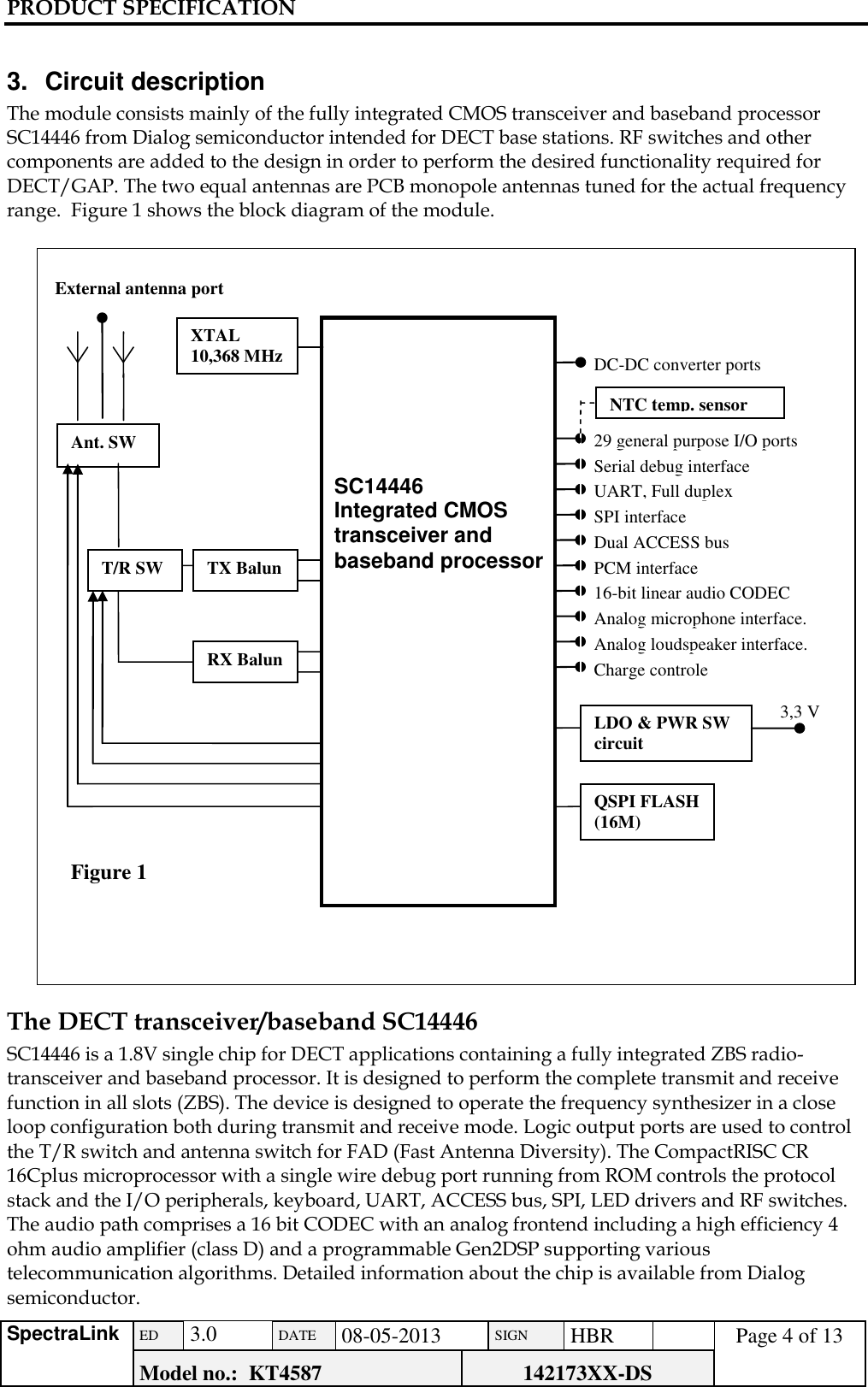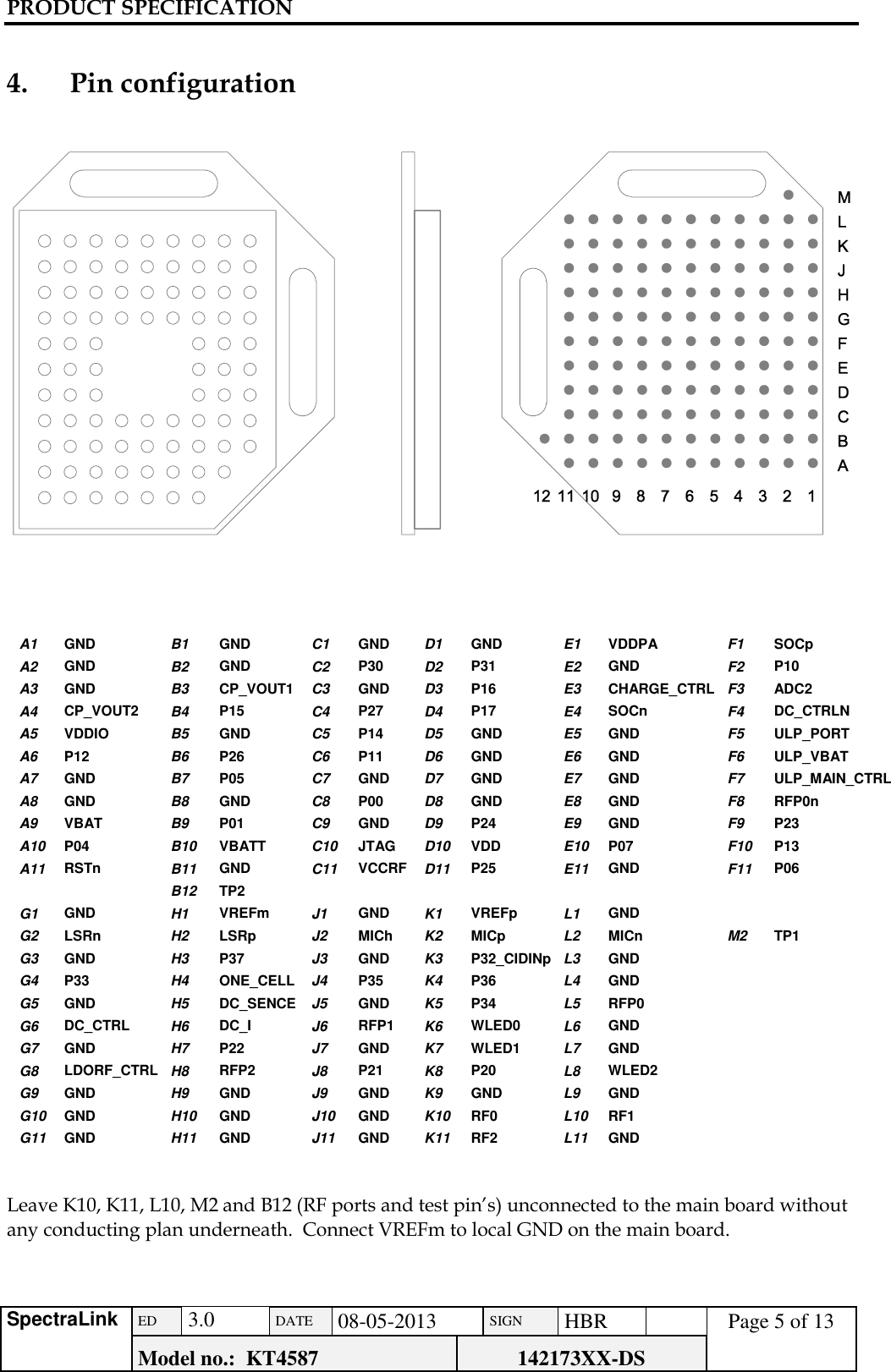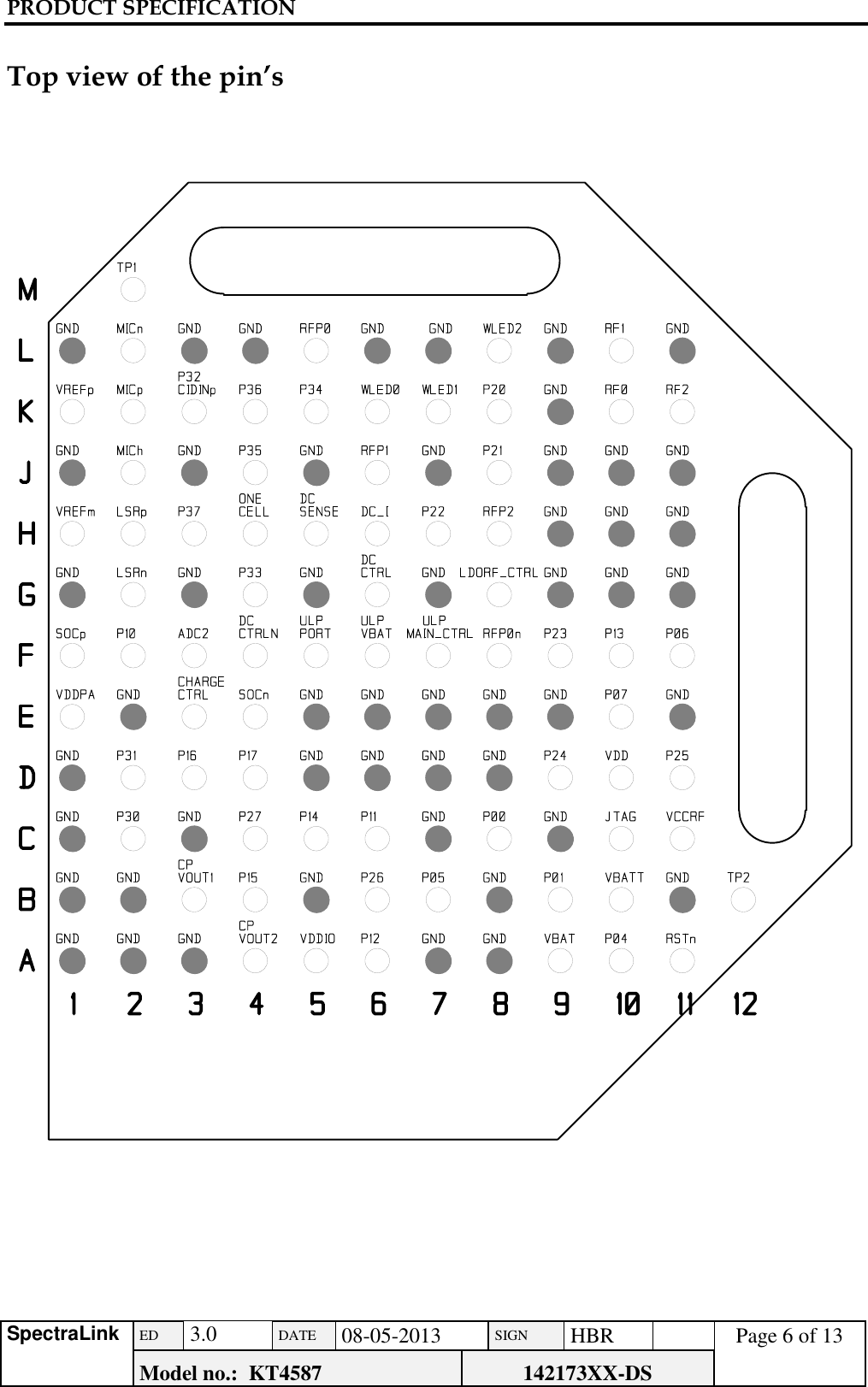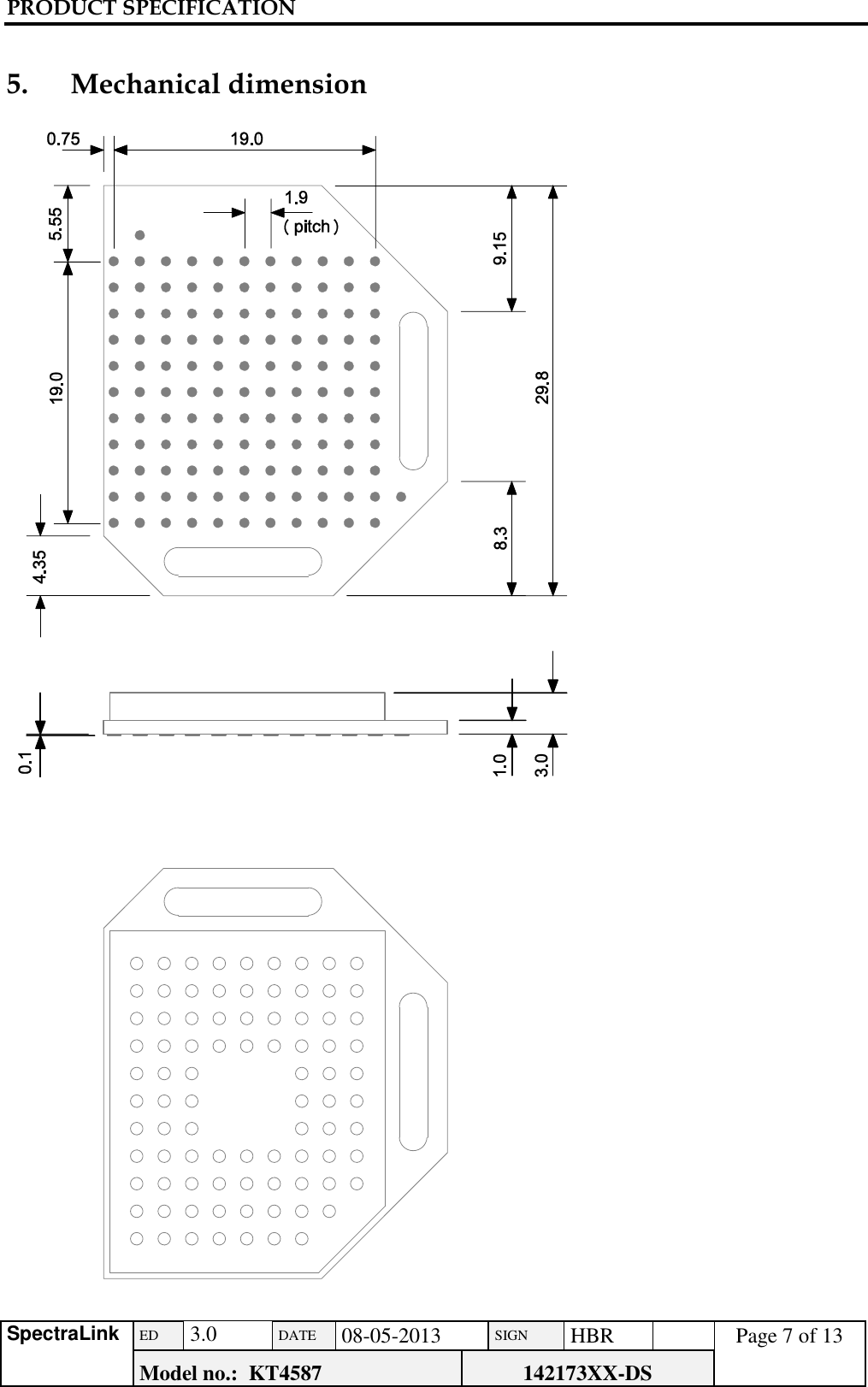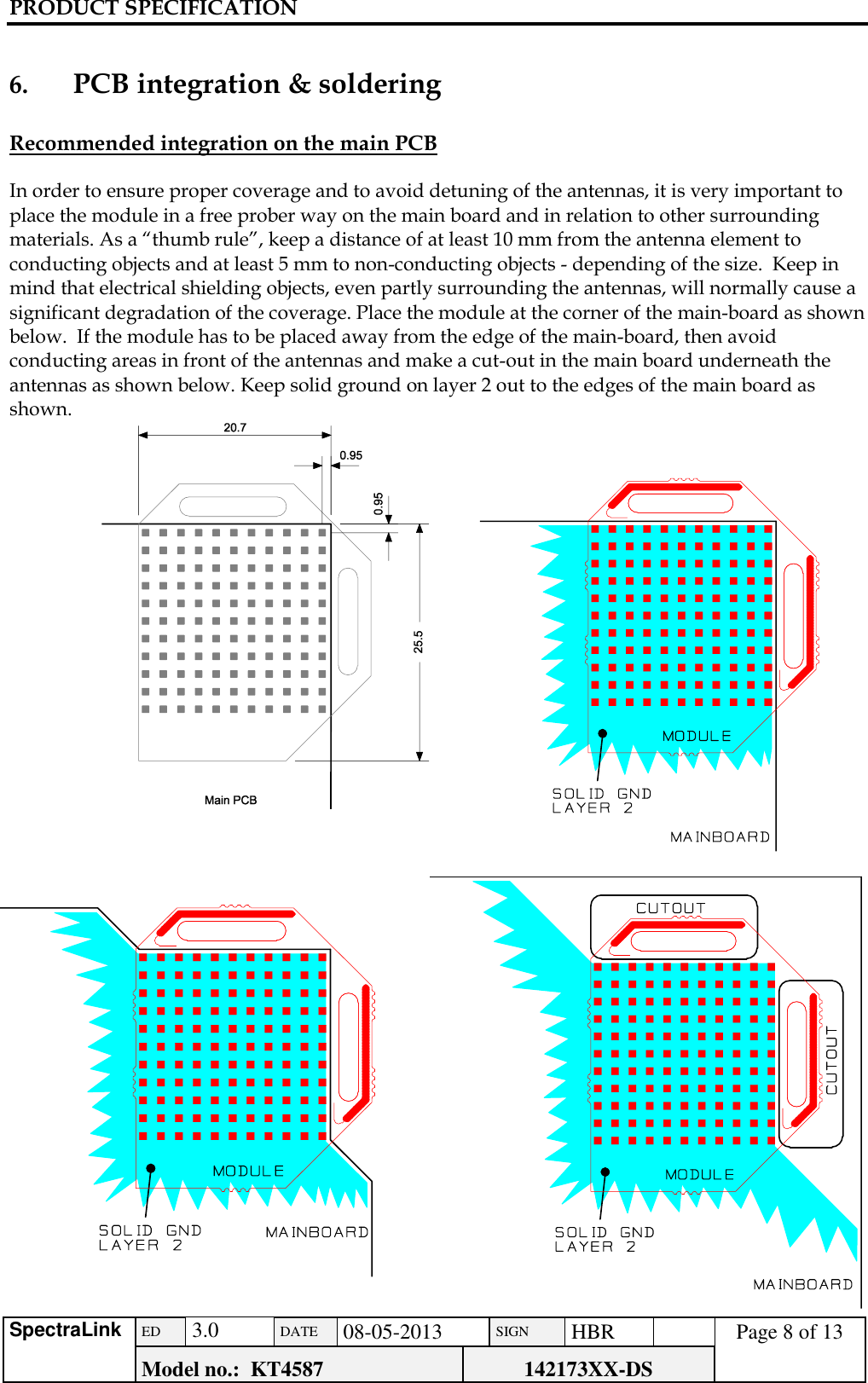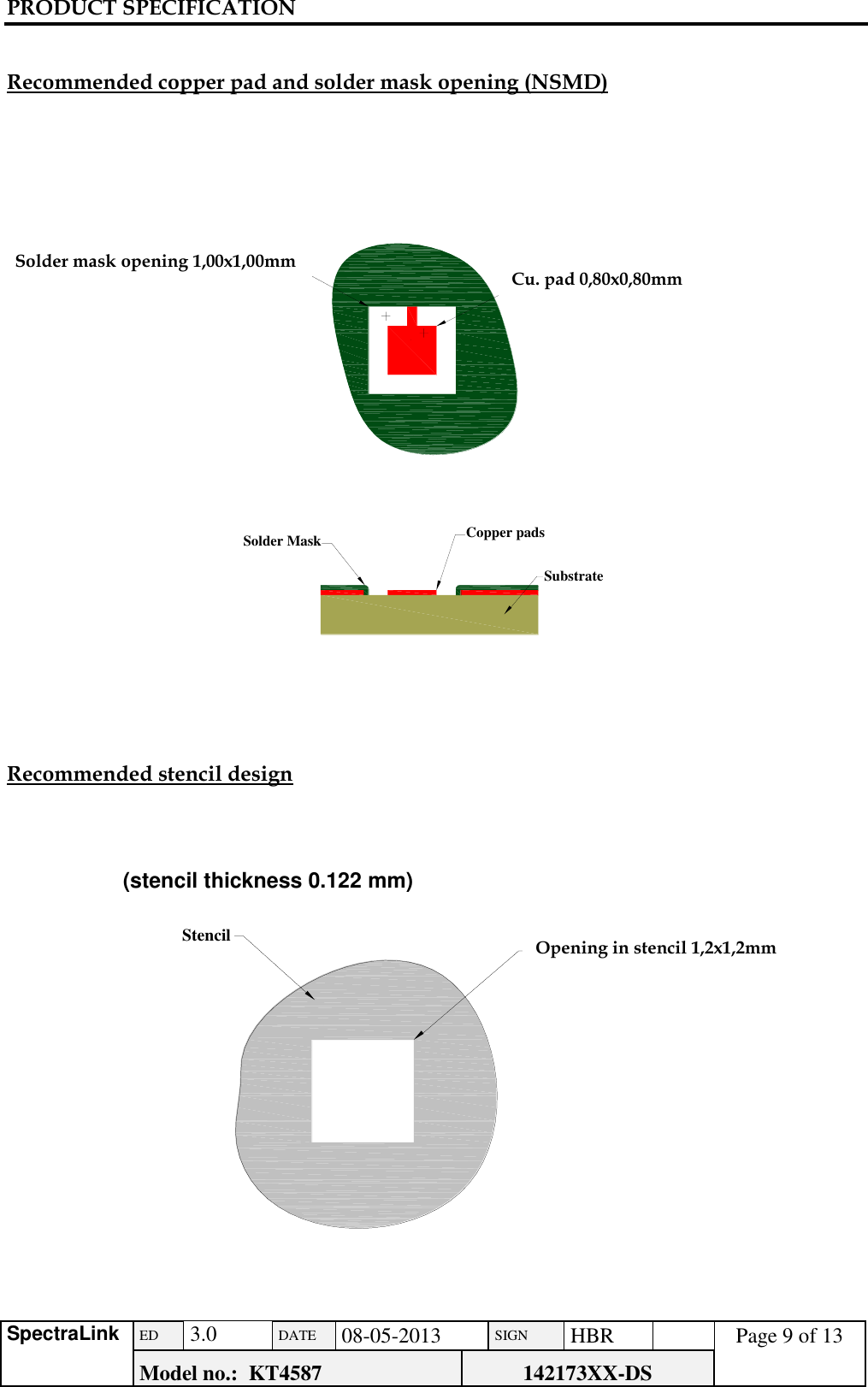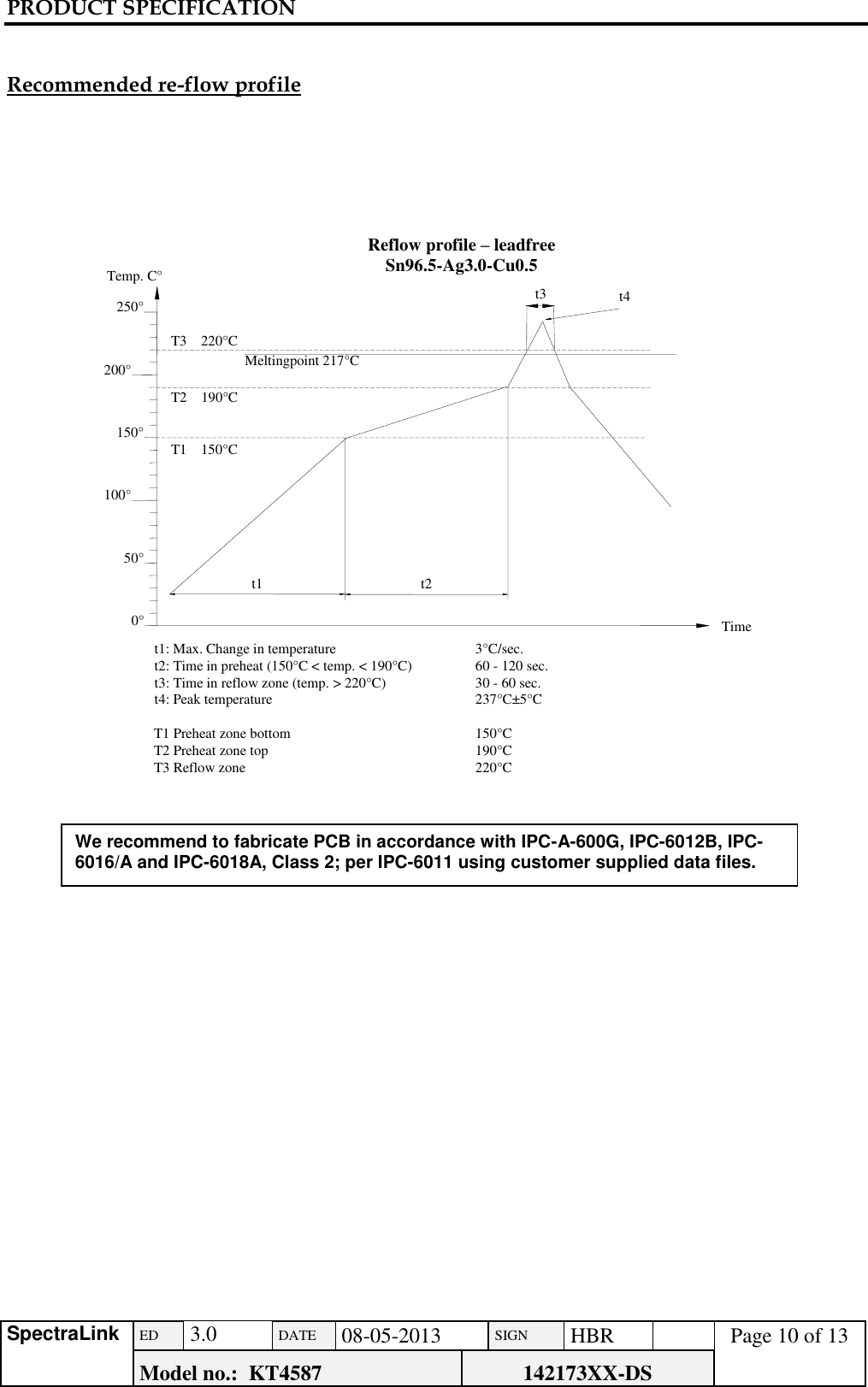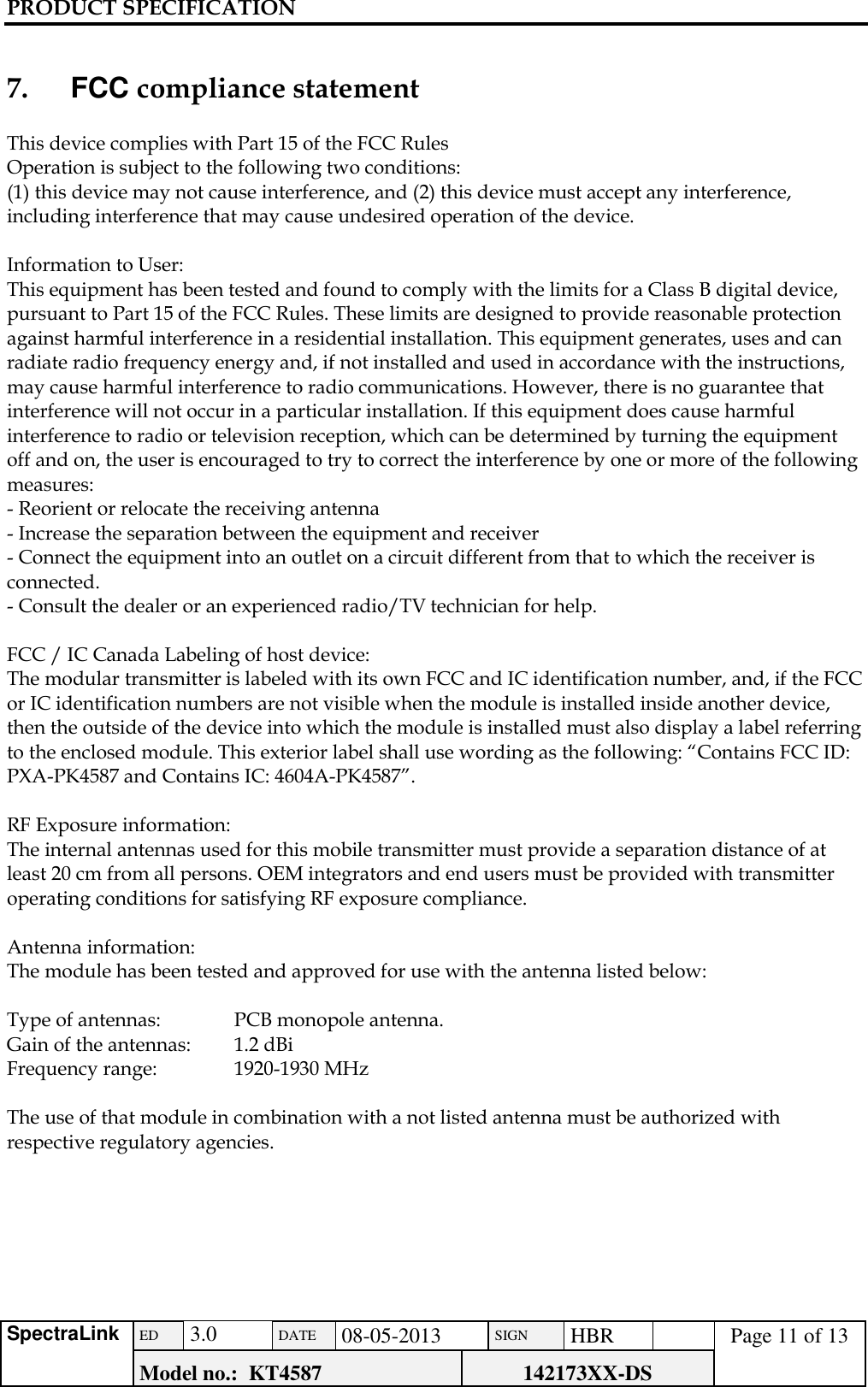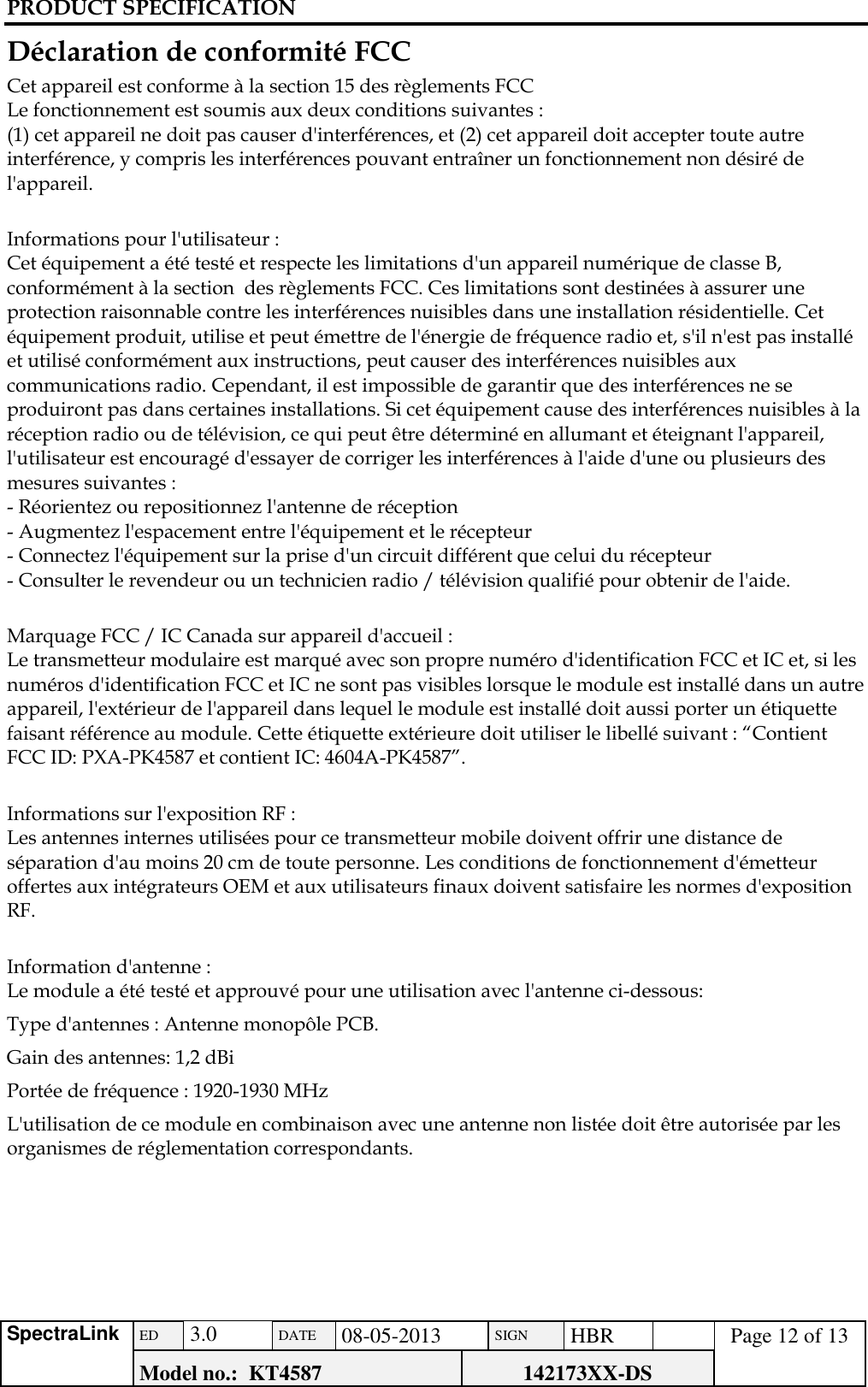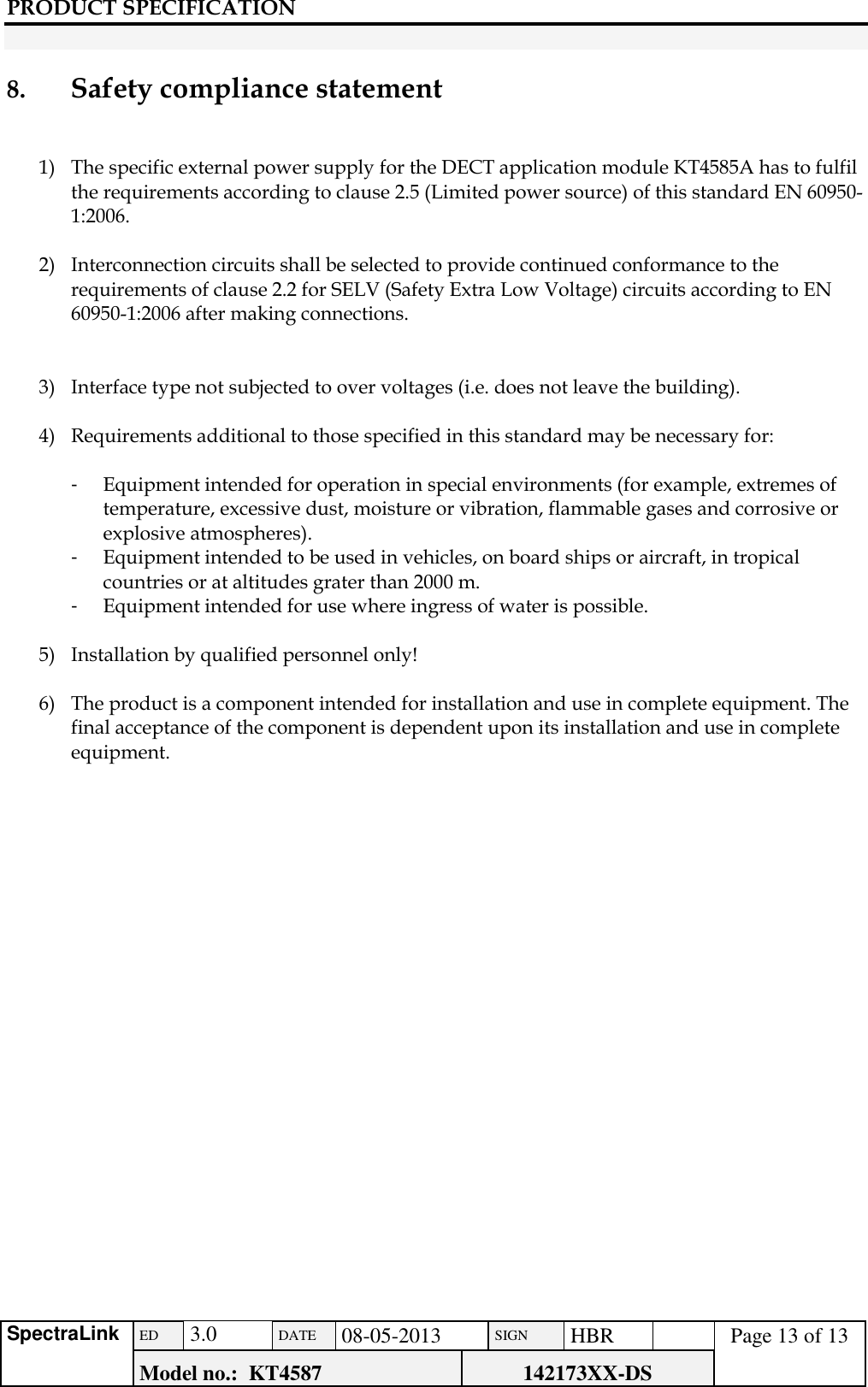Spectralink PK4587 DECT 6.0 Module User Manual Produktionsflow for 1401 31XX CSLC SDX
Spectralink Corporation DECT 6.0 Module Produktionsflow for 1401 31XX CSLC SDX
Contents
- 1. 15_KT4587_UserMan
- 2. 15_KT4587-1 ClIIPCH_UserMan
15_KT4587-1 ClIIPCH_UserMan
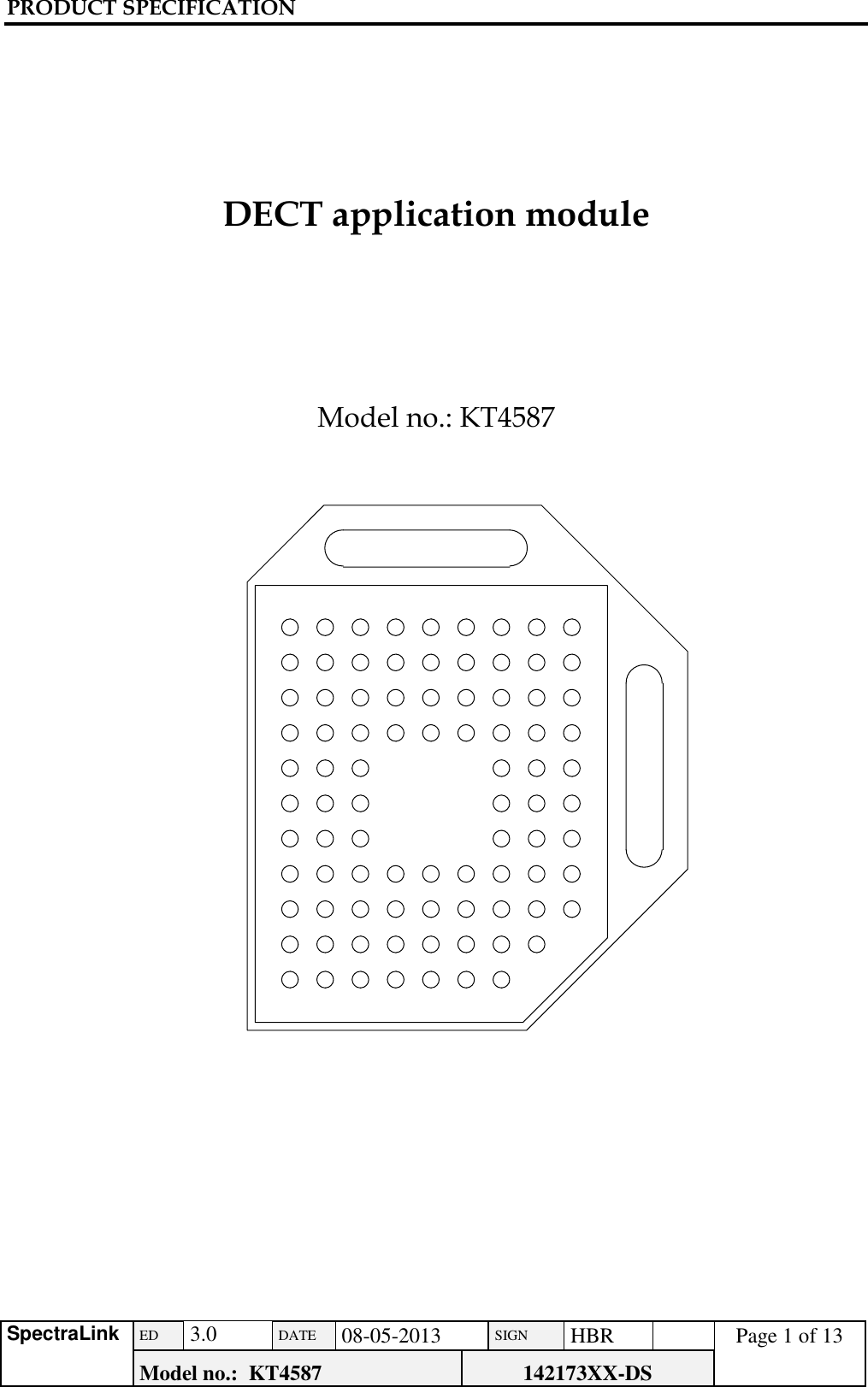
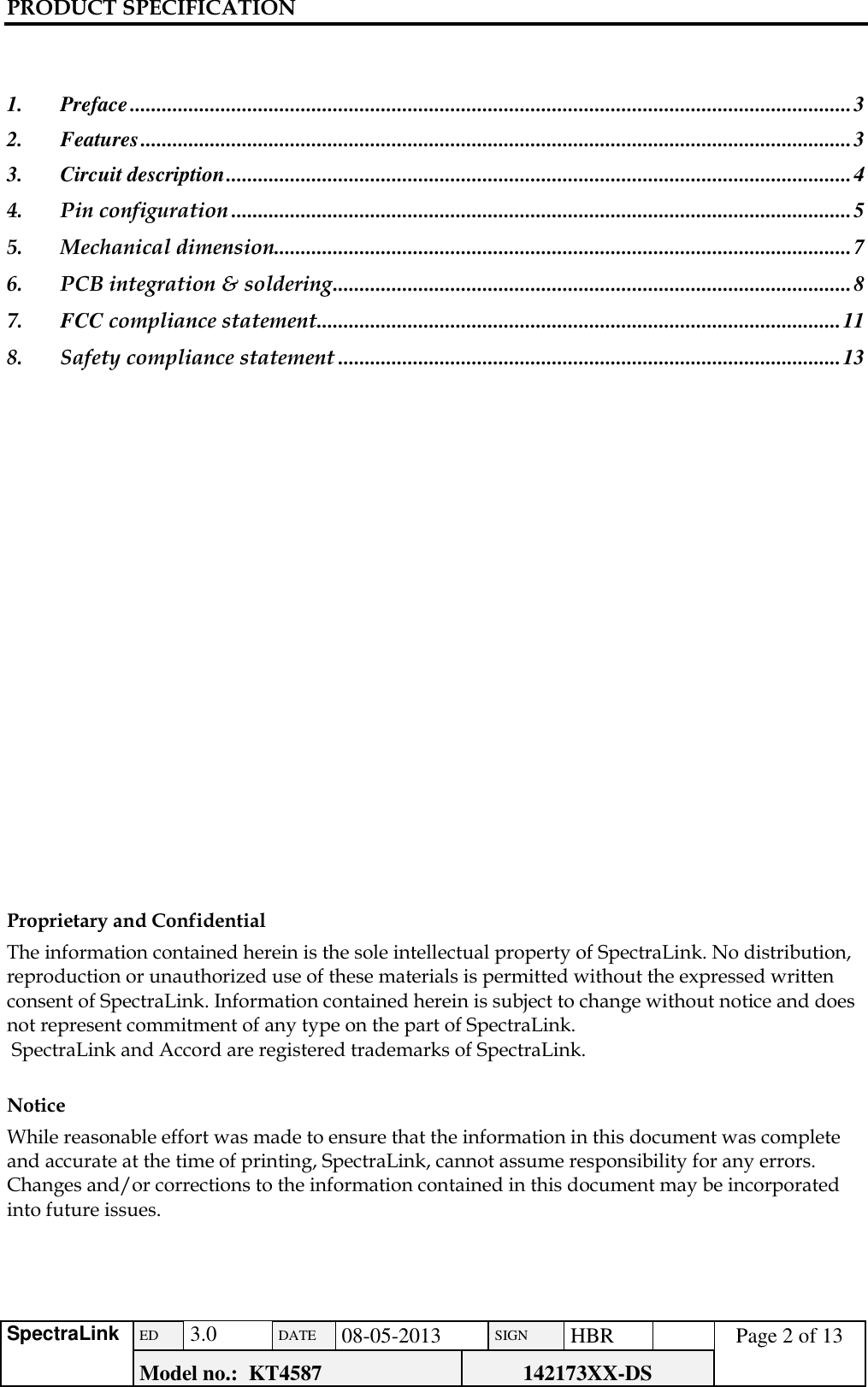
![PRODUCT SPECIFICATION SpectraLink ED 3.0 DATE 08-05-2013 SIGN HBR Page 3 of 13 Model no.: KT4587 142173XX-DS 1. Preface The KT4587, DECT application module is used to transfer messaging, data, and voice signals by use of the radio frequency spectrum according to the DECT standard. KT4587 is a fully approved module that complies with the following standards and certifications: EN 301 406 V2.1.1:2009-07 (DECT radio) EN 300 175-1 to 8 (DECT CI) EN 301 489-1 V1.8.1:2008-04, EN 301 489-6 V1.3.1:2008-08 (EMC) IEC 60950-1:2005 (ed. 2.0) +am1:2009, EN 60950-1:2006+A11:2009+A1:2010 (Safety) R&TTE certificate FCC PART 15, Subpart D FCC part 15B FCC SAR RSS-213 This means that by integration on a main board no radio test is required. 2. Features RF range: 1880 – 1930 MHz DECT channels: 120(EU) 60(US) logical duplex channels. Receiver sensitivity: Typ.< -93 dBm [BER,1000 ppm]. Transmit power (NTP): Typ. 23 dBm. , 20.2 dBm (US) Power supply range: 3.2 – 3.45V Current consumption: TBD Temp. Range: -20ºC to +85ºC. Size: 25.0 X 30.0 X 3.0mm. Other features: See data sheet for SC14446 External antenna option](https://usermanual.wiki/Spectralink/PK4587.15-KT4587-1-ClIIPCH-UserMan/User-Guide-1990612-Page-3.png)
